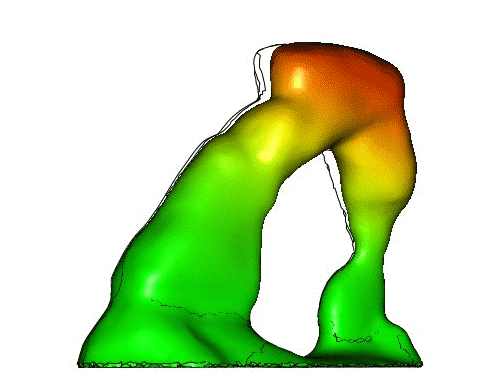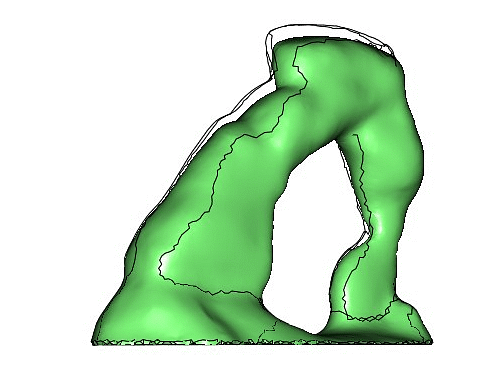
Deformation
We monitor daily thermo-elastic movements at select arches using a compact electrolytic tilt-meter. Our Jewell Instruments model 701-2(4x) biaxial tiltmeter has micro-radian resolution (1 micro-radian = 0.00006 degrees), well better than anticipated daily movement of the studied arches. The instrument is placed on the top surface of an arch limb, while the battery and data logger are stored nearby in a sealed plastic case. We measure relative tilt every second, and simultaneously monitor rock and air temperature plus relative humidity using additional data loggers. Each morning as sun strikes the arch and the rock warms, thermal expansion causes the arch to bow upwards and the limbs tilt outward. After sunset, the rock begins to cool and the arch sags, causing inward tilt. Tilt measurements help us calibrate numerical models and determine daily displacements at different locations along the arch. Preliminary model results shown at right predict vertical displacement at Delicate Arch in the range of mm as it warms and cools each day (displayed movements are greatly exaggerated, colors indicate temperature, red: warm, blue: cool).
